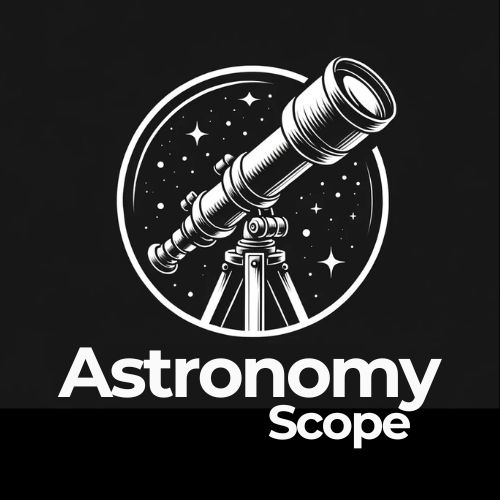Whether you’re looking to grab your first telescope or just need a change of pace, the Celestron Nexstar series is a fan favorite for many astronomy lovers. But with a decent number of options in the series to choose from, it can be challenging to determine which one may be the best pick for you.
Two you may have your eye on in particular are the Celestron Nexstar 5se and 6se.
Although they come with some similarities, there are a few core differences that make them both excellent choices in their own right.
This guide will provide a comprehensive breakdown of both of them so you can determine which one is right for you.




Celestron Nexstar 5SE vs. 6SE: Key Differences
There are a handful of signature differences between the two that make them stand out on their own. A majority of them pertain to aspects such as aperture, focal length, magnification, and more.
It’s important to review the variations between the two, small or large, as their specifications could make or break the experience you’re looking for.
Some differences matter more than others as they have more of an impact on what you can get out of it.
After reviewing the comparisons down below, you’ll have a better idea of which of their specifications cater more toward your personal preferences.
Magnification
One of the most noticeable comparisons between the telescopes is that people take their magnification seriously when viewing the night sky.
The 5SE offers 50x magnification, whereas the 6SE goes up to 60x. This may not seem like very much, yet it’s noticeable nonetheless.
If you aren’t too much of a stickler when it comes to this particular specification, it may not matter much, but if you’re looking to see as much as possible, the 6SE will be the better option.
A difference of 10x may not seem like enough for people to care, but with a side-by-side comparison, you’ll definitely notice the 6SE has a bit more to offer in this regard.
Focal Length
The difference here is quite vast as the 5SE offers a 1250mm focal length, and the 6SE offers 1500mm.
This is pretty substantial, considering what focal length has to offer, as it affects the field of view and magnification of the image you’re viewing.
Short focal lengths are great for viewing objects in deep space, and long focal lengths are optimal for viewing objects within our solar system.
Overall, it’s the distance that light travels from the entry to the exit point of a telescope, and this distance varies greatly among all telescopes.
Even if millimeters don’t seem like a far distance, you’d be able to discern this from the visuals alone.
Once again, casual viewers may not care too much about this difference, but the focal length will matter if you’re looking for a specific outcome.
Weight
Although a minor variance in weight may not be a big deal in your viewing experience, you’ll more than likely be able to feel it.
The instrument load capacity of the 5SE is 10lbs, and the 6SE is 12lbs.
Moreover, there’s a small difference in the tripod weight as it sits at 10lbs for the 5SE and 9lbs for the 6SE.
With everything assembled, the 5SE comes out with a total weight of 27.6lbs, and the 6SE sits at 30lbs.
So you may want to consider the fact that the 6SE is a little bit heavier, and any modifications you make can add or subtract from that.
Once again, this won’t necessarily impact your viewing experience, but some people like to pack light with their equipment.
Celestron Nexstar 5SE vs. 6SE: Key Similarities
As you’ll find many differences between each telescope, there are also a handful of similarities that make them similar. Some of these key similarities are actually quite important such as the limiting magnitude, focal ratio, optical design, and more.
Considering they’re paramount to the quality of the Celestron Nexstar series, it makes sense why some aspects of the telescopes will remain the same among different versions.
Keep reading below to get a breakdown of the similar characteristics the two telescopes have to offer.
Focal Ratio
To break down what this term even means, it represents the relationship between a telescope’s aperture and its focal length.
The number that comes from dividing the width of the aperture by the focal length gives you the focal ratio number. You can take this information to have a good understanding of what a focal ratio has to provide.
Both telescopes carry a focal ratio of f/10, which is pretty standard and more than enough to easily view all sorts of celestial objects. In short, this metric is a reference to the “speed” of the telescope.
For reference, a lower focal ratio delivers a better field of view but won’t do as well with viewing singular objects as a higher focal ratio would.
Mount Type
Regardless of which telescope you choose, you’ll get the benefit of its computerized Altitude-Azimuth single fork arm.
This is more than likely one of the coolest features of the Celestron Nexstar series, as it adds a lot of value to your viewing experience.
It hosts a database containing location information on over 40,000 stars, galaxies, nebulae, star clusters, and much more.
Not only does this make finding your favorite celestial objects easier, but it also cuts down a lot of the stress of tracking objects.
Optical Design
Whether you’re leaning more toward the 5SE or 6SE, both come with a Schmidt-Cassegrain optical design.
This name is widely known in the telescope and astronomy community, as the design itself is highly regarded for its quality.
To be more specific, this design is a blend of the Cassegrain reflector’s optical path and the Schmidt corrector plate.
Known for its compact construction and attention to detail, many astronomy enthusiasts are pretty happy with what it has to offer.
Although many people like to customize their telescopes with a variety of different opticals, the Schmidt-Cassegrain is more than enough for most astronomy lovers and is the go-to choice for the Celestron Nexstar series.
Who Should Get The 5SE?
For those who are hoping to save some money and get a fairly comparable experience, 5SE would be a great choice. This isn’t to say the 6SE doesn’t come with a few advantages, but they aren’t necessarily deal breakers.
If you’re simply interested in a more casual yet guided viewing experience, the 5SE will have more than enough to bring to the table.
It’s also understandable to take the cost into consideration, as the 5SE is a couple of hundred dollars cheaper. If a smaller aperture, focal length, and magnification aren’t a big deal to you, then it wouldn’t make much sense to go with the 6SE.
There are also isn’t much difference between features such as the limiting magnitude, lowest useful magnification, dimensions, or weight.
Even if the 6SE comes with a few upgrades, the 5SE will hold its relevance for many years to come. With proper care, it could be the only telescope you need for a very long time.
Above all, the fact that both telescopes come with the computerized fork arm is a big selling point. This is a feature that reels in most people as it takes out a lot of the manual work that can come with using telescopes.
The only areas that don’t match up to the 6SE pertain to the highest useful magnification, focal length, and aperture. Outside of that, the two telescopes are pretty similar in many ways.
- ADVANCED TECH MEETS ICONIC DESIGN: The NexStar 5SE pairs Celestron’s legendary orange tube with a fully computerized GoTo system—ideal for those ready to step up from manual scopes and explore more of the night sky with precision and ease.
- 5-INCH SCHMIDT-CASSEGRAIN OPTICS: The 5" aperture gathers enough light to reveal fine lunar details, cloud bands on Jupiter, and deep-sky objects like galaxies and globular clusters—all in a compact, portable form factor.
- FULLY AUTOMATED GoTo MOUNT WITH NEXSTAR+ HAND CONTROL: Use the NexStar+ hand control to select from a 40,000+ object database. The computerized mount then automatically slews to your target and tracks it—no star charts or manual alignment needed.
- FAST & EASY ALIGNMENT WITH SKYALIGN TECHNOLOGY: SkyAlign gets you observing fast—just center any three bright stars or planets, even if you don’t know their names. The system then calculates your position and aligns the mount in minutes.
- BUILT-IN WEDGE FOR ASTROIMAGING: Capture long-exposure images of the night sky—perfect for entry-level astrophotography. The integrated wedge lets you polar align the mount, reducing field rotation for improved tracking during imaging.
Who Should Get The 6SE?
If you only want the best quality out of the Celestron Nexstar series of telescopes, the 6SE would be a good option for you. Although the 5SE has quite a few similarities, it doesn’t compare when it comes to magnification.
The quality the 6SE provides can’t be argued with, and it makes sense why it’s so popular among serious astronomy enthusiasts.
Its highest useful magnification surpasses that of the 5SE, and you won’t have any trouble viewing deep-space objects with clarity. It does cost around $1,100, but it comes with a quality that’ll outlast the cost.
There may be a little more weight to it, but it’s not enough to cause any trouble. The 6SE is an excellent option for those who need a little extra power and capability out of the Celestron Nexstar series of telescopes.
- ADVANCED TECH MEETS ICONIC DESIGN: The NexStar 6SE pairs Celestron’s legendary orange tube with a fully computerized GoTo system—ideal for those ready to step up from manual scopes and explore more of the night sky with precision and ease.
- 6-INCH SCHMIDT-CASSEGRAIN OPTICS: The large 6" aperture gathers enough light to reveal fine lunar details, cloud bands on Jupiter, and deep-sky objects like galaxies and globular clusters—all in a compact, portable form factor.
- FULLY AUTOMATED GoTo MOUNT WITH NEXSTAR+ HAND CONTROL: Use the NexStar+ hand control to select from a 40,000+ object database. The computerized mount then automatically slews to your target and tracks it—no star charts or manual alignment needed.
- FAST & EASY ALIGNMENT WITH SKYALIGN TECHNOLOGY: SkyAlign gets you observing fast—just center any three bright stars or planets, even if you don’t know their names. The system then calculates your position and aligns the mount in minutes.
- COMPATIBLE WITH CELESTRON ACCESSORIES: Easily upgrade your setup with all our latest accessories to enhance automation, wireless control, or location accuracy as your skills grow.
Final Verdict
Although there are many different versions in the Nexstar series to choose from, there are differences between them and the 5SE and 6SE are no exception.
If you don’t like feeling limited or care to consider any modifications, the 6SE should have everything you might need to view our solar system and beyond.
Some people may go with the 5SE based on cost alone, but others feel the higher price tag is warranted based on what the 6SE is capable of in terms of viewing and clarity.
Overall, both versions have something to offer, but the 6SE has a leg up with a few of its specifications and features. So if you can afford the additional expense, it’s the one to go for!
Other Celestron NexStar guides you may want to check out:
- Celestron Nexstar 4SE vs 5SE
- Celestron Nexstar 4SE vs 8SE
- Celestron Nexstar 6SE vs 8SE
- Celestron Nexstar 6SE Review

Hey, my name is Jeremy. I’m a passionate and seasoned astronomer who loves nothing more than observing the night sky. I also love researching, learning, and writing all things Space and the Universe. I created Astronomy Scope to share my knowledge, experience, suggestions, and recommendations of what I have learned along the way while helping anyone to get into and maximize their enjoyment of the hobby.

